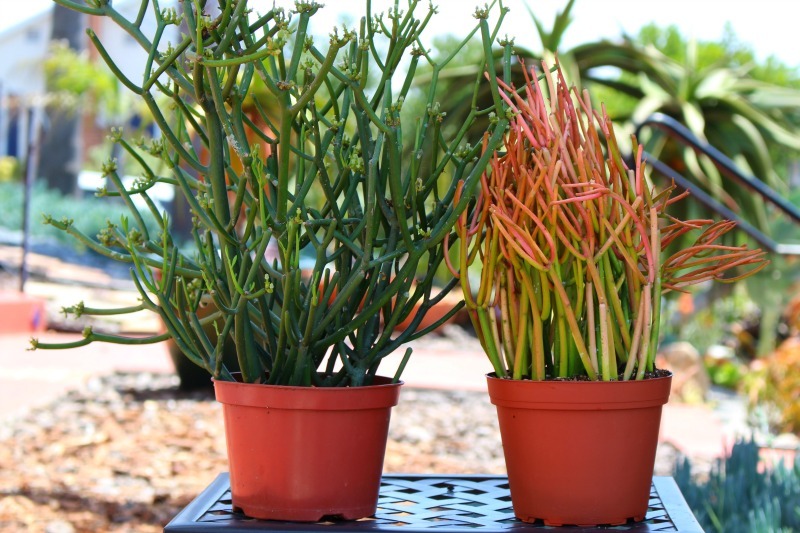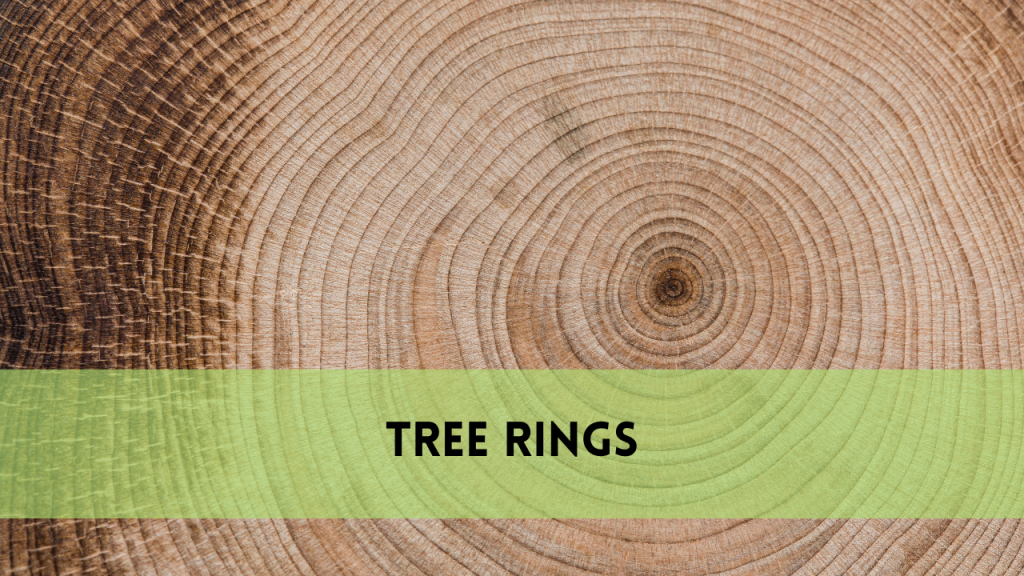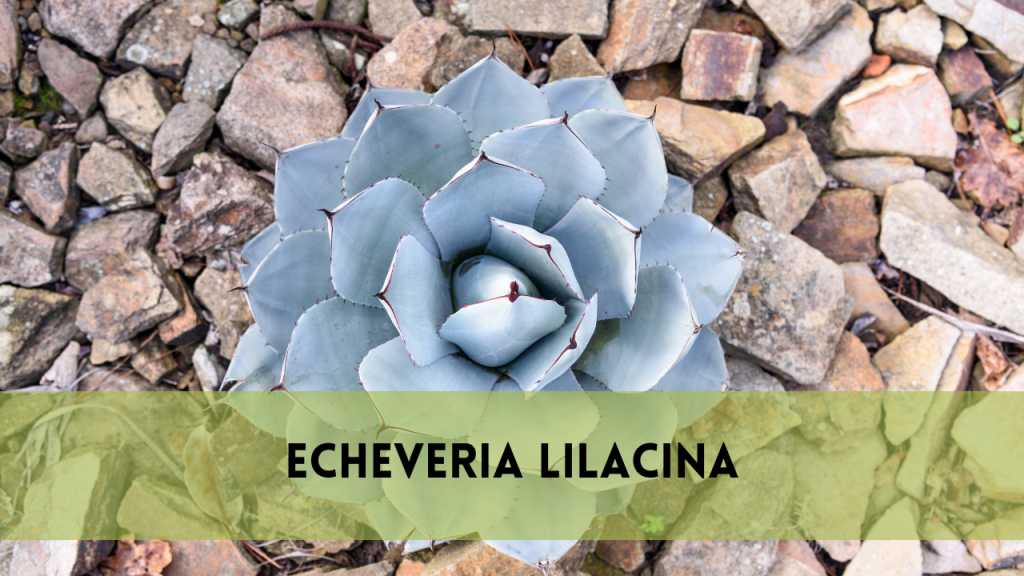The Fire Stick Plant, known as Euphorbia tirucalli, is a visually attractive succulent with fiery-colored stalks. This plant is popular among gardeners and horticulturists because of its unusual appearance and low maintenance requirements. The Fire Stick Plant, also known as Pencil Cactus, Sticks on Fire, or Milk Bush, is a versatile addition to indoor and outdoor gardening. Its usefulness in horticulture goes beyond its beauty; it is also recognized for its hardiness and adaptability to various growing environments.
Botanical Information about Fire Stick Plant
Scientific Name and Classification
The Euphorbia genus includes the Fire Stick Plant, scientifically known as Euphorbia tirucalli. It belongs to the Euphorbiaceae family, which comprises a diverse range of succulent and non-succulent plants.
Physical characteristics
This plant has slender, pencil-like stems that glow a bright crimson or orange when exposed to direct sunshine. The stems often lack leaves, giving the plant a distinct, minimalist appearance. The Fire Stick Plant can reach a height of 30 feet in its natural habitat, but it stays considerably smaller when grown in pots or as part of a garden setting.
Growth Habits
The Fire Stick Plant spreads and branches, resulting in a bushy appearance. It thrives in warm, sunny climates and needs little water, making it an excellent choice for drought-tolerant landscaping.
Native Habitat
Geographical Distribution
Euphorbia tirucalli is native to Africa’s arid and semi-arid regions, specifically Angola, Mozambique, and South Africa. It has also been naturalized in other countries, such as India and Brazil.
Natural Environment
The Fire Stick Plant grows in dry, sandy soils and rocky environments. It thrives in hot, sunny climates with little rain.
Adaptations to habitat
Because of its succulent nature, the plant retains water in its stems, allowing it to endure protracted droughts. Its brilliant hue serves as a defense against animals and direct sunlight.
Varieties and cultivars
Popular varieties
The Fire Stick Plant comes in various popular kinds, each with its qualities. Some prominent variants are the ordinary Euphorbia tirucalli and the ‘Rosea’ variety, which has exceptionally bright red stems.
Hybrid Cultivars
Hybrid cultivars were created to improve certain characteristics, such as color intensity and growth habits. Due to their improved aesthetic value, these cultivars are popular in ornamental gardening.
Unique characteristics
Variations in stem thickness, pigmentation, and growth patterns distinguish each Fire Stick Plant variety. These features make the plant an adaptable alternative for various landscape applications.
Propagation Methods
Seed Propagation
Seed propagation is uncommon but not impossible. Seeds should be sown in well-drained soil and kept moist until they germinate. More experienced gardeners commonly utilize this strategy.
Cutting Propagation
The most common way of propagation is through cuttings. Cuttings should be picked from healthy, mature stems and allowed to callus before planting in a well-drained soil mixture. This strategy assures faster, more consistent growth.
Grafting Techniques
Grafting is occasionally used to reproduce specific cultivars or to combine desired characteristics from various plants. This procedure necessitates cautious handling and is usually done by experienced horticulturists.
Planting and Growth Conditions
Soil requirements
Fire Stick Plants flourish in sandy, well-drained soil. A cactus or succulent soil mixture is appropriate. Poorly draining soil can cause root rot and other concerns.
Lighting requirements
This plant requires direct sunlight to keep its bright colors. It can handle partial shade but may lose some of its vibrant colors.
Watering Schedule
Watering should be done infrequently but thoroughly. Between waterings, let the soil dry completely. Overwatering can cause root rot and other problems.
Fertility Practices
Fertilization is optional but can encourage healthy growth. A balanced, diluted fertilizer sprayed during the growing season is adequate.
Maintenance and Care
Pruning Guidelines
Pruning is modest, although it can assist in keeping the plant in shape and removing dead or diseased stems. Due to the plant’s caustic sap, wear gloves and handle cautiously.
Pest and Disease Management
The Fire Stick Plant is relatively pest-resistant, however it can be infested by common pests like spider mites and mealybugs. Regular inspections and suitable treatment can help to prevent these hazards.
Seasonal Care Tips
The Fire Stick Plant should be moved indoors or sheltered from frost in colder climates. During the growing season, regular monitoring and care will promote healthy growth.
Landscaping Benefits
Enhances aesthetic appeal.
The Fire Stick Plant’s vivid colors and distinctive structure make it a standout in any garden. It can be used as an accent plant or in extensive plantings to create a dramatic impression.
Functional Uses
Aside from its visual appeal, the Fire Stick Plant can be used for xeriscaping, as a natural barrier, or as a privacy screen. Its drought resistance makes it an excellent addition to water-saving gardens.
Popular Landscape Designs
This shrub is widely utilized in modern and desert-themed landscaping. Its striking appearance compliments various landscape types, ranging from minimalist to tropical.
Companion Planting
Best companion plants
The Fire Stick Plant complements other succulents and drought-tolerant plants, including agave, aloe, and yucca. Their comparable growth requirements result in a unified landscape design.
Benefits of Companion Planting
Companion planting can improve the health and look of your garden. Plants with comparable needs are grouped together to decrease resource competition while creating a visually appealing landscape.
Safety considerations
Toxicity for Humans and Pets
The Fire Stick Plant produces a milky sap that harms people and dogs. Contact with the sap can cause skin irritation, while ingestion might result in serious health problems. It is critical to handle the plant cautiously and keep it out of the reach of youngsters and pets.
Handling Precautions
Wear gloves and protective gear when working with the Fire Stick Plant to avoid contact with the sap. In contact, thoroughly clean the affected area with soap and water.
Common Problems and Solutions
Overwatering Issues
Overwatering is a typical concern that can cause root rot. Keep the soil well-drained and let it dry fully between waterings to avoid this.
Pests and Diseases
While the Fire Stick Plant is largely pest-resistant, it occasionally attracts spider mites and mealybugs. Regular inspections and early treatment with insecticidal soap or neem oil can help to resolve these issues.
Growth Problems
If the plant becomes leggy or loses its brilliant colors, it may get insufficient sunshine. Move it to a sunnier spot and make sure it gets enough light.
Harvesting & Storage
Best time to harvest
If you want to propagate or prune the Fire Stick Plant, the optimum time to take cuttings is during the growing season while the plant is actively growing.
Storage Techniques
Harvested cuttings should be stored in a cool, dry place until a callus forms on the cut end. Once callused, they can be planted in an appropriate growing medium.
Medical and Cultural Significance
Traditional applications
In various civilizations, the Fire Stick Plant has been used medicinally, such as to treat warts and other skin diseases. However, due to its toxicity, such applications are not recommended without professional supervision.
Modern Medical Applications
Modern studies have examined the plant’s potential for use in biofuel production and as a natural insecticide. However, its hazardous qualities limit its application in conventional medicine.
FAQS
What is the Firestick Plant?
The Fire Stick Plant is a succulent with brightly colored, pencil-like stems.
Is the Fire Stick Plant easy to maintain?
Yes, it is a low-maintenance plant that prefers sunny, dry climates.
How frequently should I water my Fire Stick Plant?
Water occasionally and let the soil to dry completely between waterings.
What kind of soil works best for the Fire Stick Plant?
This plant grows well in sandy, well-drained soil.
Why is my Fire Stick Plant losing color?
The most prevalent reason is a lack of sunlight. Move it to a sunnier spot.
How should I manage bugs on my Fire Stick Plant?
To treat common pests such as spider mites and mealybugs, apply insecticidal soap or neem oil.
Conclusion
The Fire Stick Plant is a visually appealing and durable addition to any landscape, recognized for its fiery stalks and low maintenance requirements. Whether utilized as a focal point in landscaping or grown as a houseplant, it has a distinct aesthetic appeal and practical benefits. However, because of its toxic sap, it must be handled carefully and with safety precautions in mind. Following correct maintenance requirements, the Fire Stick Plant can thrive and bring brilliant color to your garden for many years.




